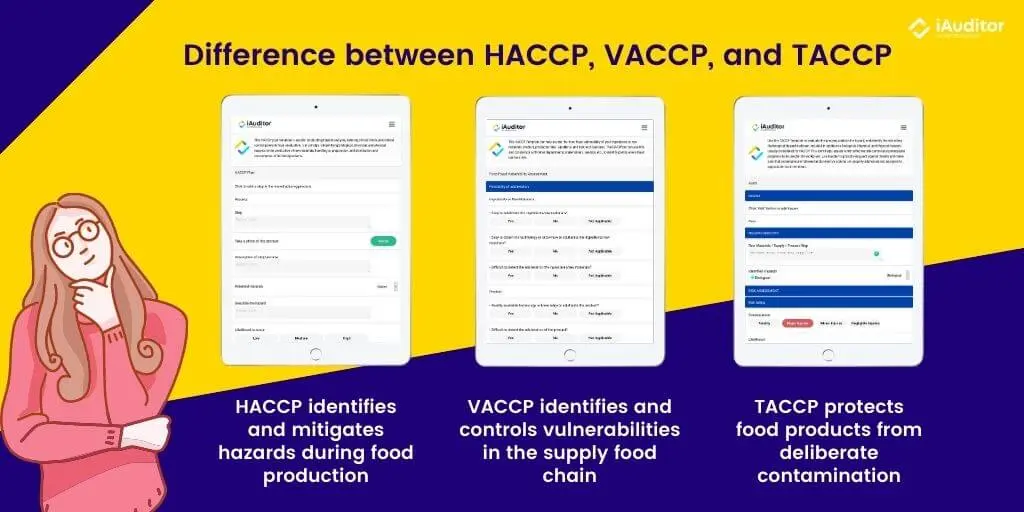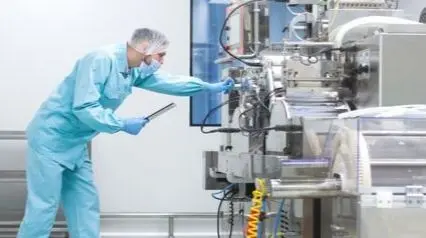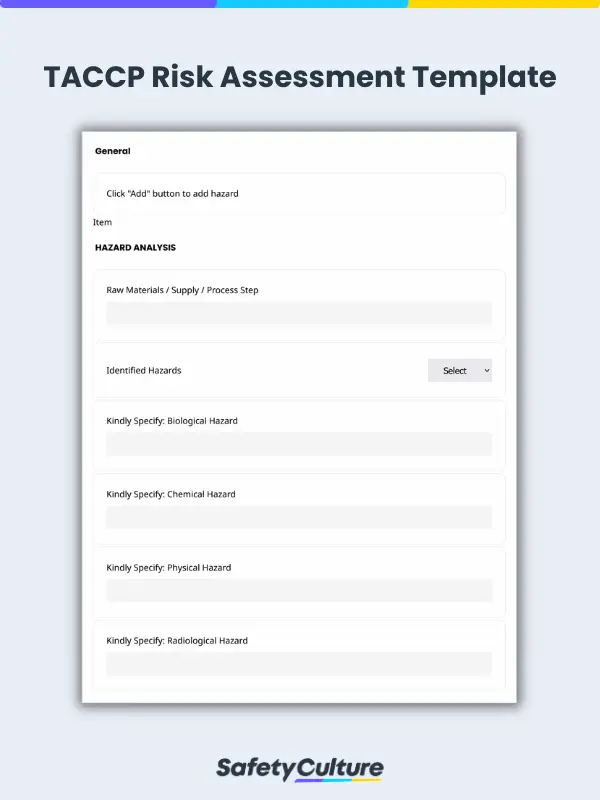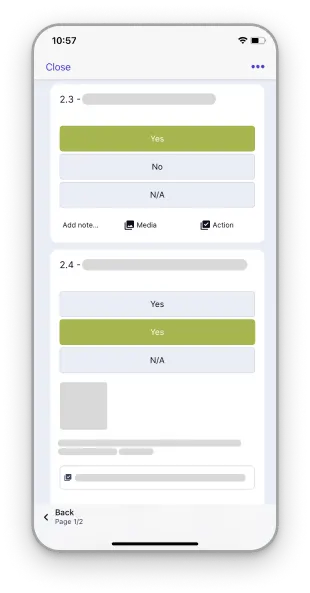What is TACCP?
TACCP (Threat Assessment Critical Control Points) is a management process that aims to protect food products from deliberate contamination that is intended to cause harm. Also called food defense, TACCP helps proactively identify and manage control points in the supply chain that can be at risk of intentional contamination.
What does it protect against?
In the context of TACCP, threats are acts that can harm consumers or businesses through the contamination of food products. Some examples for TACCP include exposing food production to allergens such as peanuts, contaminating produce with needles or other physical contaminants, or causing a salmonella outbreak via contaminated self-service food. Such malicious acts can be costly for businesses and can be very harmful to consumers if not addressed immediately.
Difference between HACCP, VACCP, and TACCP
HACCP
Hazard Analysis Critical Control Point is designed to identify and mitigate hazards during food production and ensure that food product is safe for consumption.
VACCP
Vulnerability Assessment Critical Control Point helps identify and control vulnerabilities in the food supply chain that can be exposed to (economically motivated) food fraud.
TACCP
It aims to protect food products from deliberate contamination with the intention to cause harm (behaviorally or ideologically motivated). TACCP builds upon existing processes of HACCP in ensuring the safety of food products

Difference between HACCP, VACCP, and TACCP
How to Implement it
Businesses can properly mitigate risks by proactively anticipating threats and knowing which points in the food supply chain are at risk of deliberate contamination. To implement TACCP, businesses should:
- Create a multi-disciplinary team with members from HR, procurement, security, etc., who can contribute in developing a TACCP plan.
- Identify points in the food supply chain where threats are possible against staff, operations, and products.
- Conduct assessments of the critical points to identify risks.
- Analyze the risks and put in place appropriate threat controls and continue to monitor the control points.
- Create action plans in anticipation of possible breach of controls.
- Train employees and continue to improve the TACCP process by reviewing documentation and anticipating new threats.
TACCP Risk Assessment Example
Check this sample PDF report to see what information can be included in a TACCP risk assessment.



